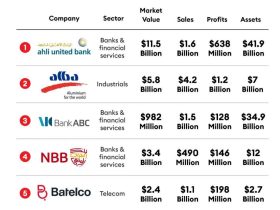
Micronesia’s main exported goods
The Federated States of Micronesia (FSM) is a small island nation in the western Pacific Ocean with an economy that heavily relies on foreign aid, subsistence farming, and fishing. Despite its limited land area and resources, Micronesia participates in international trade by exporting a range of goods. Below are the main goods Micronesia exports:
1. Marine Products
Fish and Seafood: Marine resources constitute the largest share of Micronesia’s exports. Tuna is the most significant export, with the nation participating in the commercial fishing industry. Micronesia’s exclusive economic zone (EEZ) is rich in tuna species like skipjack, yellowfin, and bigeye, which are exported mainly to Asian markets such as Japan, China, and Taiwan.
Aquaculture Products: While still developing, the aquaculture industry contributes to exports, including sea cucumbers and other high-value marine species.
2. Agricultural Goods
Copra: Derived from dried coconut meat, copra is a traditional export product used for producing coconut oil and other related goods.
Kava: Although less significant, kava, a root crop used in ceremonial and medicinal drinks, is sometimes exported, primarily to other Pacific Island countries and markets interested in herbal products.
Other Crops: Taro and breadfruit, while mostly consumed domestically, occasionally find niche export markets.
3. Handicrafts and Cultural Goods
Handmade Items: Traditional woven mats, carvings, and jewelry made from local materials like shells are exported, mainly to tourists and international markets looking for unique cultural products.
Pearls: Black pearls, though not as significant as in neighboring Pacific islands, are a developing export commodity.
4. Timber and Natural Resources
Sawn Timber: Some islands within Micronesia export small quantities of sawn timber from native hardwoods. However, the scale is limited due to sustainable forestry concerns.
Mineral Resources: Exploration of minerals in Micronesia’s waters is ongoing, but significant commercial exports have yet to materialize.
5. Re-exports
Micronesia occasionally acts as a hub for re-exporting goods, including petroleum products and machinery, which are imported, utilized minimally, and then exported to nearby islands or regions.
Export Partners
Micronesia’s key export partners include:
Japan and China, which are major destinations for tuna and other marine products.
United States, which imports cultural and agricultural goods.
Australia and other Pacific Island nations that purchase kava and other niche products.
Challenges in Export
Micronesia faces several challenges in expanding its export economy:
Geographical Isolation: The nation’s remote location increases transportation costs and logistical challenges.
Limited Production Capacity: Small-scale industries limit the volume of exports, making it hard to compete in global markets.
Sustainability Concerns: Overfishing and deforestation pose risks to the long-term availability of exportable resources.
Future Potential
Micronesia’s government and international partners are investing in sustainable fisheries, aquaculture, and eco-tourism, which could expand export opportunities. Renewable energy and deep-sea mining are also areas of interest that may contribute to future exports.
In conclusion, Micronesia’s main exported goods primarily revolve around its marine resources, supplemented by agriculture, cultural goods, and small-scale industries. With strategic development and sustainable practices, the nation has the potential to expand its export portfolio while preserving its natural resources and cultural heritage.



Leave a Reply